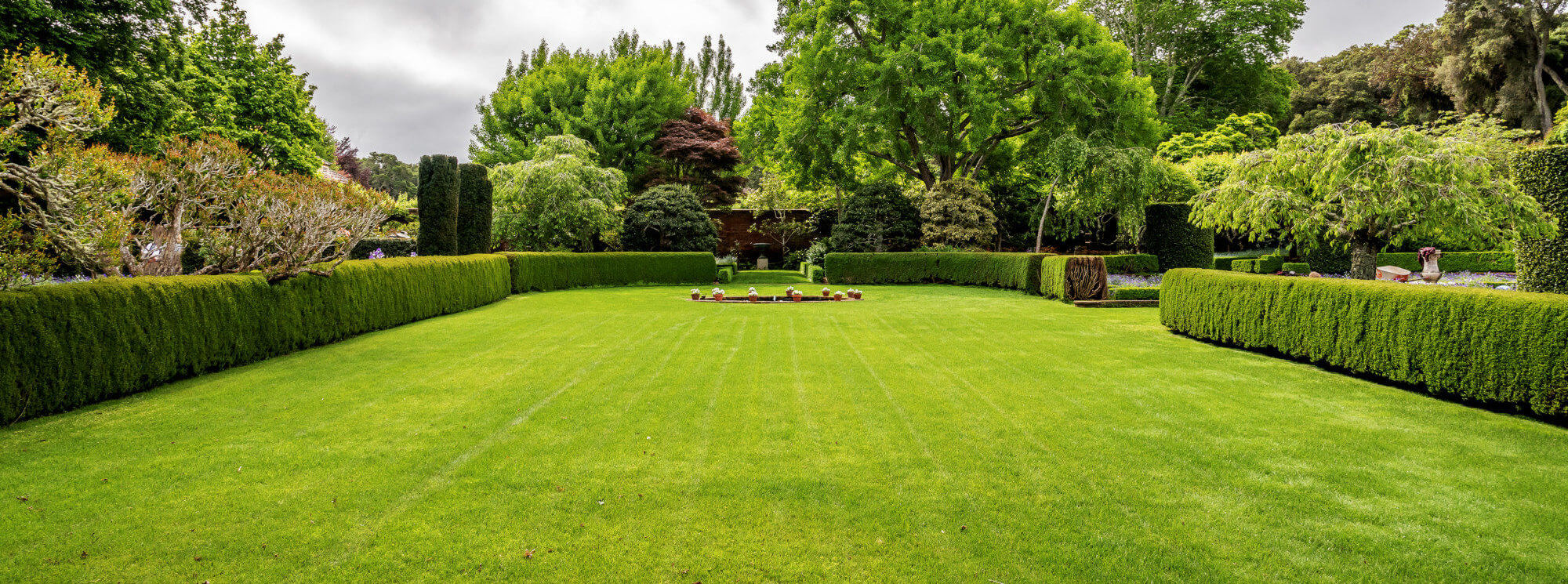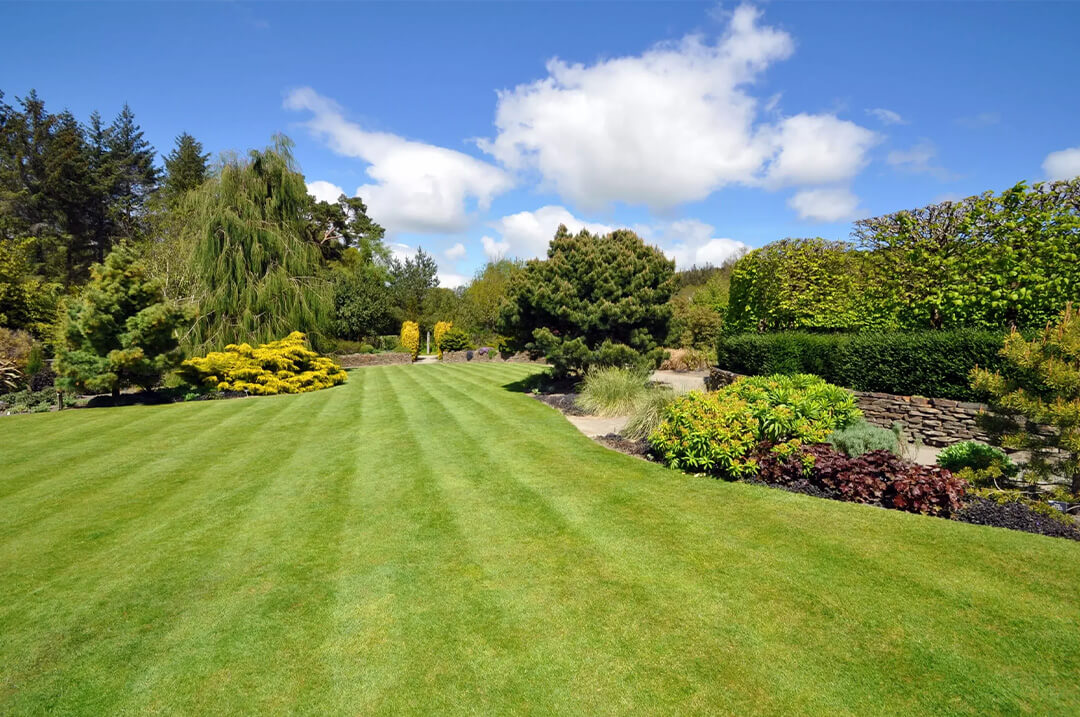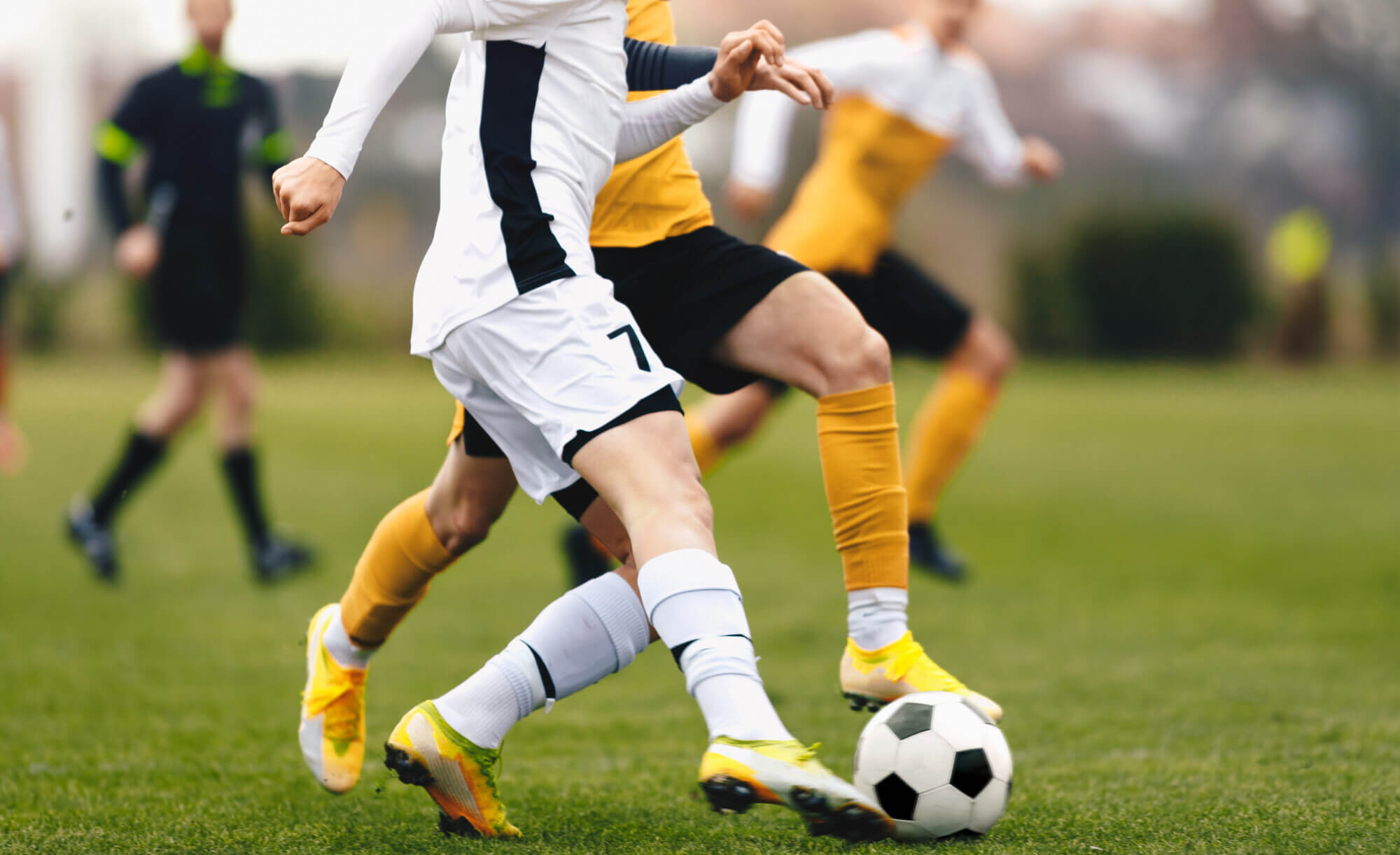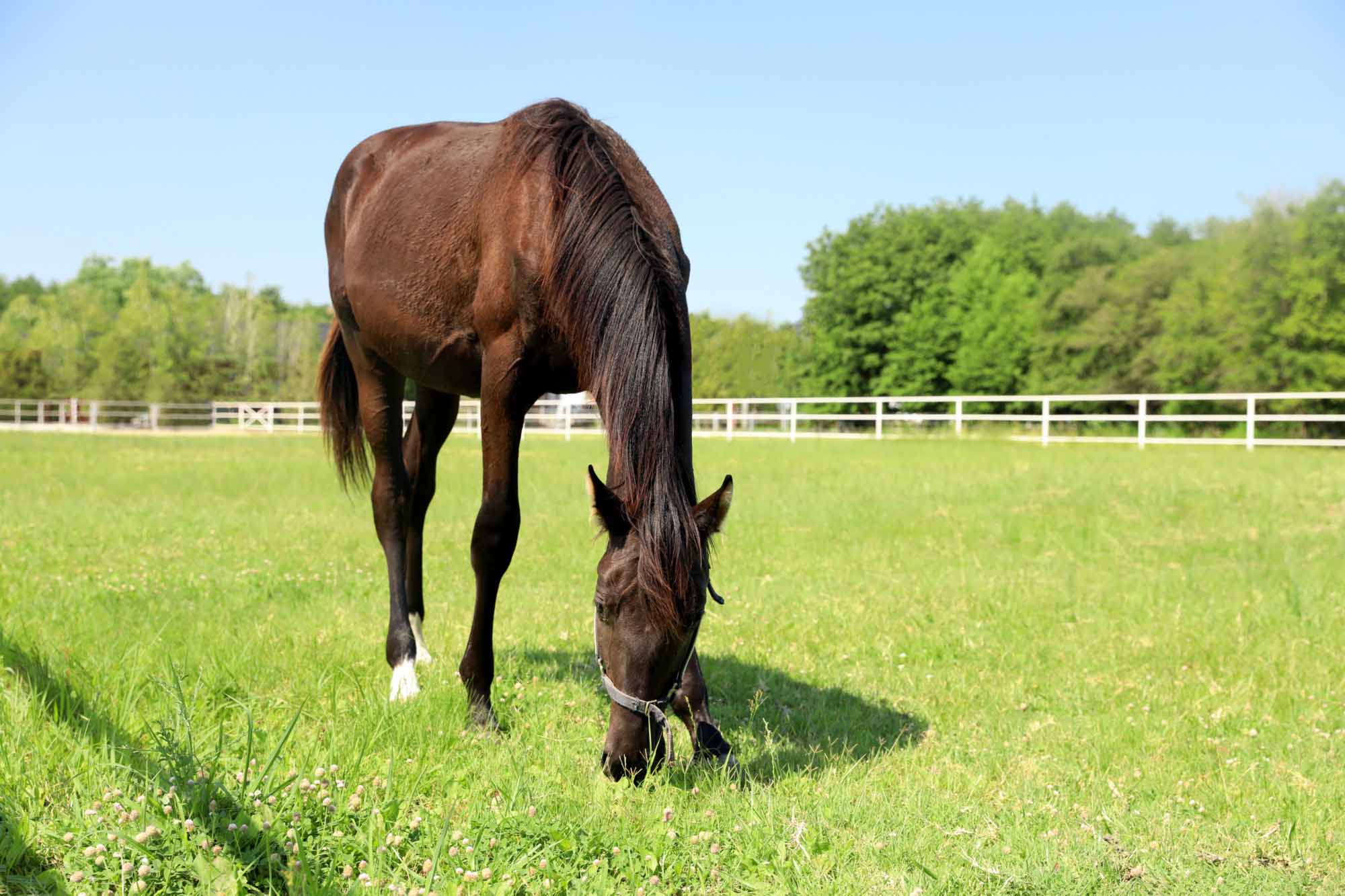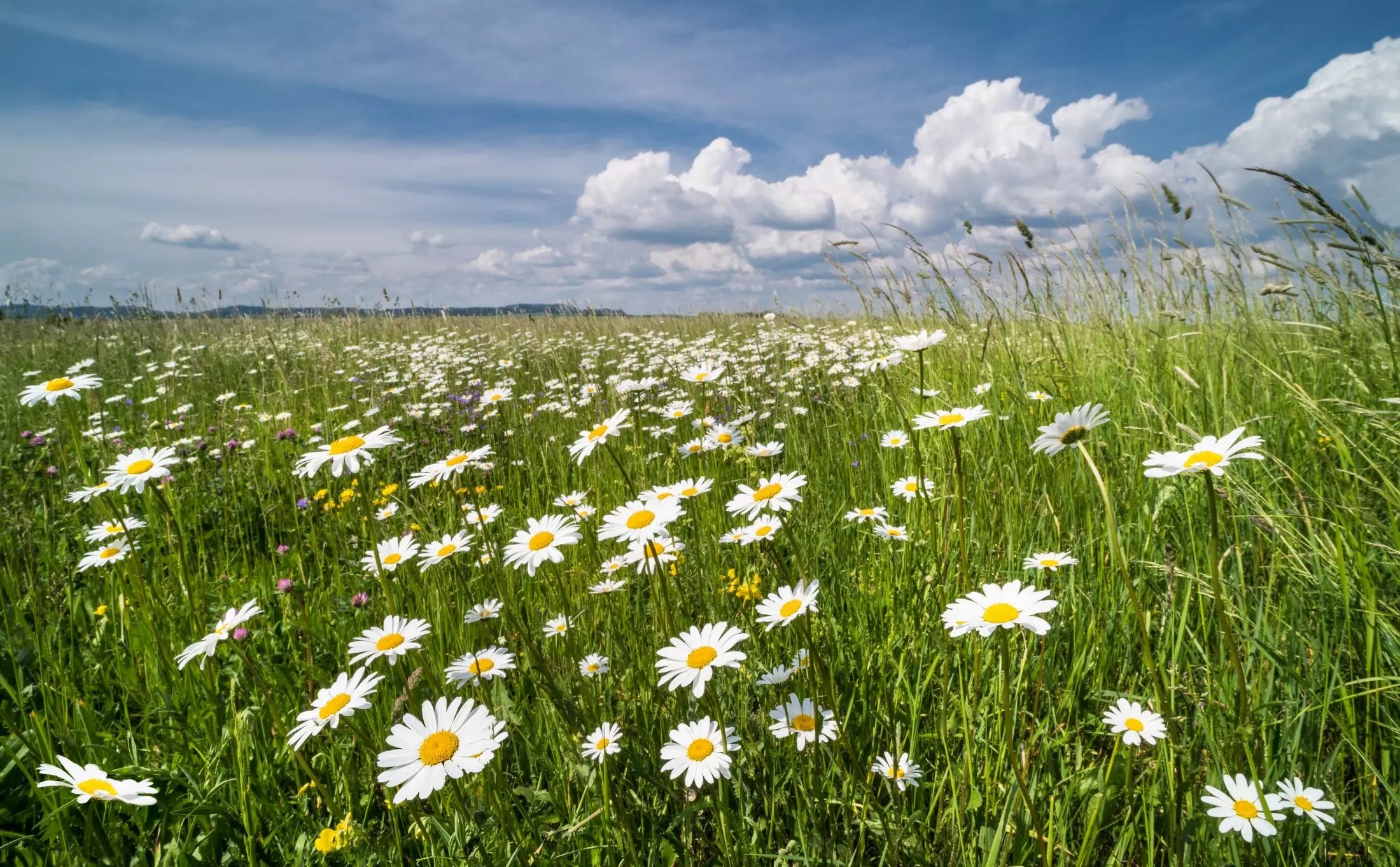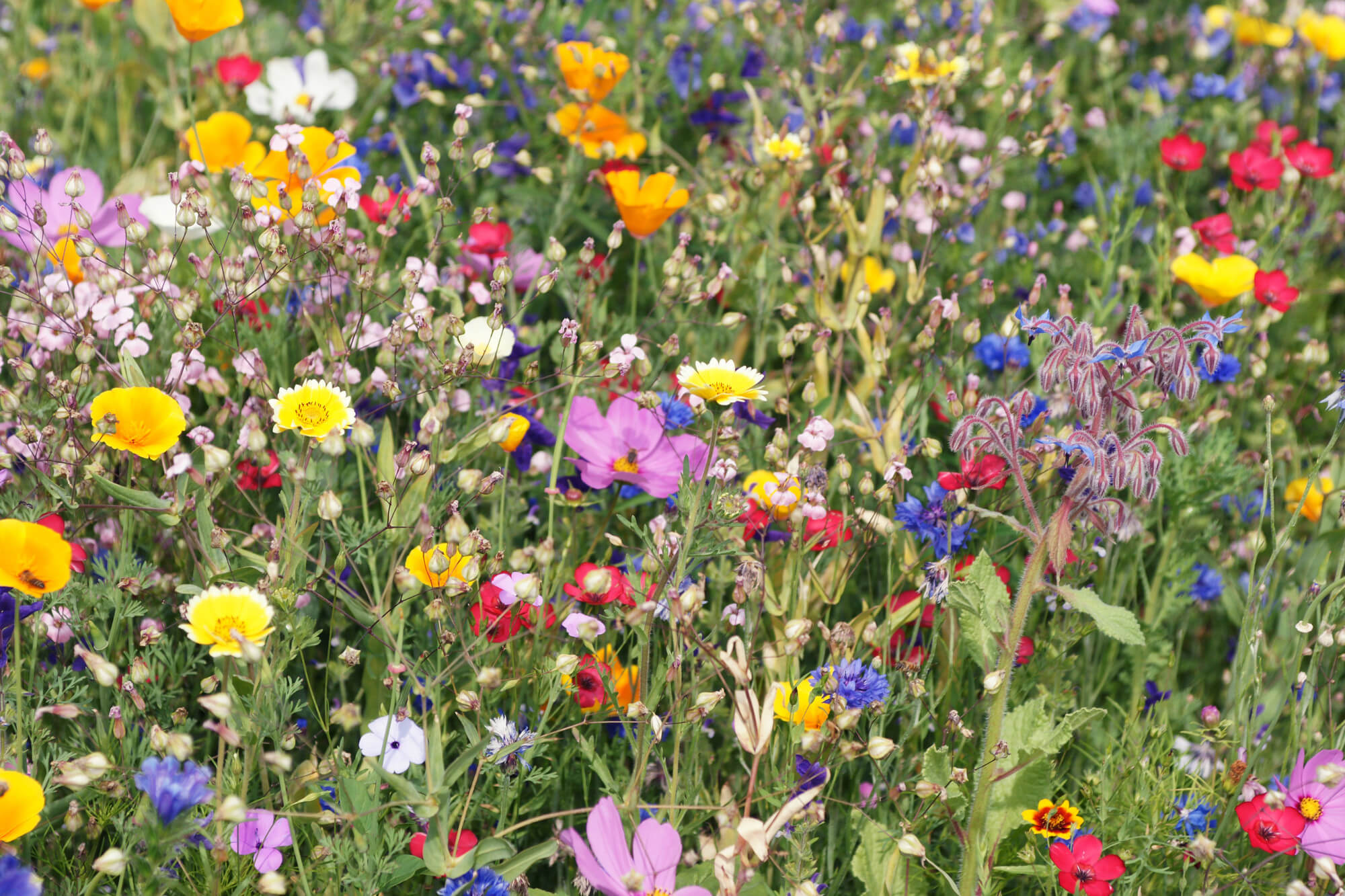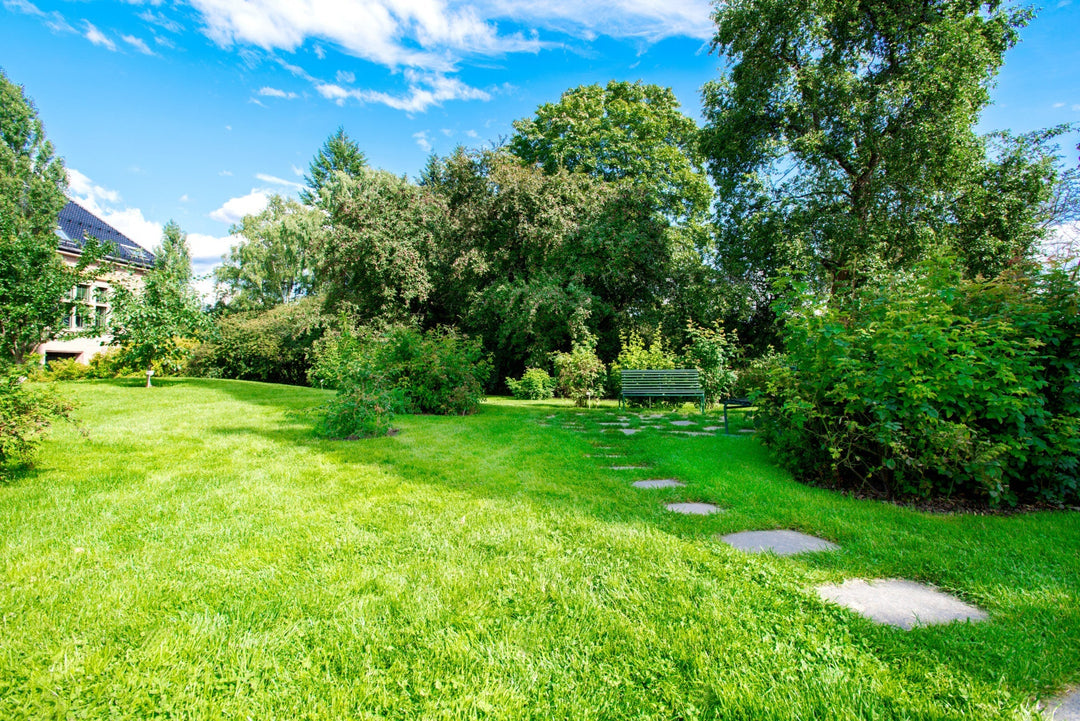Imagine stepping out into your backyard, expecting a lush, green haven, but instead being greeted by unsightly brown patches. Lawn burn, primarily caused by dog urine, is a common frustration for pet owners aiming to maintain pristine greenspaces. This phenomenon occurs due to the high concentration of nitrogen in dog urine, which can wreak havoc on your grass in both small and large doses.
Understanding the intricate dance between man’s best friend and your lawn is crucial. Dog urine's impact varies between male and female dogs, as their urination habits concentrate nitrogen differently across the lawn. Thankfully, there are numerous strategies dog owners can employ to mitigate and manage lawn burn effectively, ensuring a harmonious coexistence between pups and plants.
In this article, we'll delve into practical tips for preventing lawn burn. From designating specific potty areas to exploring dietary changes and choosing urine-resistant grass, you'll discover actionable solutions to protect your lawn. Whether you're a seasoned dog owner or new to pet parenting, these insights will help maintain a vibrant and welcoming outdoor space for both you and your furry friend.
Understanding Lawn Burn from Dog Urine
Lawn burn from dog urine is a common issue for pet owners who desire a beautiful and lush lawn. This problem occurs mainly due to the high concentration of nitrogen in dog urine. While nitrogen is essential for plant growth, too much can damage your grass. This overload acts like a fertiliser burn, bleaching patches of grass to brown. Larger dogs might cause more lawn damage than smaller ones because they produce more urine. Also, the way in which dogs urinate plays a role. Female dogs, for example, squat, creating concentrated urine spots. Understanding these dynamics can help you take steps to prevent unsightly brown spots and keep your lawn green and healthy.
Why Dog Urine Damages Grass
Dog urine damages grass mainly because of its high nitrogen content, but there's more to it. The nitrogen can create patches of dead grass with lush growth around them. This happens because the surrounding grass benefits from the lower concentration of nitrogen. The pH level of dog urine also plays a role. If the urine is too acidic or alkaline, it can change the soil's condition, harming the grass. Repeated urination in the same spot can make matters worse by increasing the concentration of harmful compounds. Lawns that are dry or stressed are more vulnerable. They lack the strength to resist the nitrogen and salts in dog urine.
The Role of Nitrogen in Urine
Nitrogen, found in abundance in dog urine, can be a double-edged sword for grass health. It plays a critical role in fertilising plants, but when concentrated, it can burn grass much like an overdose of fertiliser would. This often results in brown centers of grass patches with greener edges, showing where nitrogen concentrations vary. A practical way to combat this is by watering the areas where dogs urinate. This practice helps dilute the nitrogen, reducing its harmful effects. Moreover, increasing a dog's water intake can dilute urine nitrogen levels. By doing so, the potential damage to the lawn is lessened, keeping the grass healthier.
Differences Between Male and Female Dogs
Gender differences in urination habits impact lawn damage. Female dogs tend to squat, concentrating urine in one spot. This can result in noticeable damaged spots on the lawn. In contrast, male dogs often lift a leg and urinate in spurts, which spreads the urine across a wider area. This spread can sometimes reduce nitrogen's concentration, lessening grass harm. There's a misconception that female dogs inherently cause more damage. However, it's more about their urination style rather than chemical differences in urine. Lawn damage potential exists for all dogs when urination is concentrated. Larger dogs, due to higher urine volume, might worsen this effect, but it's distinct from gender-based differences.
Designate a Specific Potty Area
Preventing dog urine patches on your lawn requires planning and strategy. A specific potty area is a smart solution. This method helps focus your dog's activities on one part of the yard. By doing this, you protect the rest of your lawn from turning into a patchwork of dead grass and brown spots. Enclosing the potty area with a small fence can also help. This keeps the designated space separate from your lush lawn. To keep the potty area from being too obvious, consider adding tall grasses or bushes around it. Use urine-resistant plants like clover or perennial ryegrass here. These choices help cut down grass damage from urine on grass. By managing the potty area well, you’ll maintain a beautiful lawn.
Benefits of Training Your Dog
Training your dog to urinate in a specific area can greatly benefit your yard. It helps your grass stay green and reduces lawn damage from urine spots. Adult male dogs tend to urinate in short bursts, which can be a natural advantage. By using training aids like pheromone-impregnated posts, you can guide your furry friend to pee in the right spot. This not only limits the high nitrogen content from dog urine but also helps in the lawn repair process. Proper training, along with good lawn care, ensures you get a beautiful lawn despite having a dog. Using specific peeing spots is a practical way to manage the concentration of nitrogen in dog urine and protect the health of your grass.
Tips for Establishing a Potty Spot
Creating a designated potty spot requires some planning. Start by using a Pee Post that emits pheromones to attract your dog to the right area. Consistency is key, so offer your dog treats and positive reinforcement during training. This helps them associate the spot with rewards. Pick a spot in the yard that is inconspicuous, like a corner where brown patches won't be an eyesore. You might also want to use mulch or gravel instead of grass to reduce urine on grass damage. Make sure the mulch materials are non-toxic. Rubber, cedar, straw, or coconut fibers are good options. Fencing off a section and using tall grasses to obscure it is another way to keep the potty area out of view. These strategies not only help in establishing an effective potty area but also ensure your lawn's overall health and beauty.
Dilute Urine with Water
Diluting dog urine with water is key to preventing lawn damage. When your dog urinates, it leaves a high concentration of nitrogen on the grass. This can lead to yellow or brown patches over time. By watering the spot immediately, you wash away residues and reduce nitrogen levels. This helps to protect your grass from turning into brown patches. Moreover, increasing your dog’s water intake can help. When your dog drinks more, its urine is diluted, which minimises grass damage. A garden hose is an effective tool for rinsing the area after urination. Regular deep watering of your lawn once a week is also more effective than light daily watering. It helps dilute nitrates in the urine, thus curbing potential grass damage. By taking these steps, you can ensure your furry friend’s urine doesn’t ruin your green lawn.
How to Properly Water the Affected Area
After your dog urinates, acting quickly to water the affected area can save your grass. Rinsing with water immediately helps dilute the urine. This reduces the urine’s nitrogen concentration and its potential to damage the lawn. Use a garden hose or watering can to flush the spot thoroughly. This simple action washes away salts and nitrogen residues from the soil.
Consistent watering of these areas prevents dry grass from turning brown. It helps in maintaining the soil health and discourages other dogs from marking the same spot. This is because watering reduces the urine smell. To further protect your lawn, make sure to prevent the soil from drying out. Regular and thorough watering can prevent burnt grass spots from appearing in your yard over time. This way, you can maintain a beautiful and lush lawn despite your furry friend’s habits.
The Importance of Quick Action
Quick action is crucial when dealing with dog urine on grass. The sooner you treat the affected area, the better you can prevent severe damage. Using a dog urine neutraliser immediately can help treat and revive damaged patches. This product encourages the regrowth of grass, restoring the lawn's appearance and health.
Furthermore, watering to dilute nitrogen concentrations is essential. By minimising the nitrogen content, you curb the lawn burns that often result from dog urine. Acting fast with lawn repair products can ease the solution of urine spots. Additionally, reseeding dead grass patches with appropriate grass seed like perennial ryegrass can cover up brown spots effectively.
Choosing urine-resistant grass types for your lawn can also help maintain its appearance. Quick intervention ensures not only a healthier lawn but prevents further extensive damage. By following these tips, you can manage the effects of dog urine on grass efficiently, keeping your garden beautiful and vibrant.
Lawn Mowing and Maintenance
Keeping your lawn lush and green while sharing it with a furry friend can be challenging. Dog urine often leads to unsightly brown spots and dead grass caused by the concentration of nitrogen. Fortunately, with some thoughtful lawn mowing and maintenance practices, you can reduce the impact of dog urine and maintain a beautiful, healthy lawn. The key is to manage the nitrogen content and adjust your lawn care techniques. Implementing changes in the height at which you mow and your lawn's watering schedule can make a significant difference in preventing lawn damage.
Optimal Grass Height for Resilience
One effective way to prevent dog urine patches is by adjusting the height of your lawn. Taller grass helps resist the damage done by nitrogen concentration in urine. For healthy and resilient grass, it's recommended to increase your mower's deck height. Keeping the grass higher provides a strong defense against yellow patches and lawn burns. Taller grass blades are less sensitive and absorb nitrogen better, spreading it more evenly.
Regular Irrigation Techniques
Consistent irrigation is crucial in preventing lawn damage from dog urine. Deep watering sessions once a week help dilute the nitrate content in urine effectively. Instead of light daily watering, a weekly deep soak ensures water penetrates deep into the soil, maintaining strong, healthy roots.
After your dog urinates, promptly using a watering can to rinse the area can further dilute the urine, avoiding yellow patches. With the grass remaining green and lush, this simple technique helps prevent lasting damage to the lawn. Remember, letting your grass grow a bit longer also aids in its resilience against urine spots, giving it a dense defense line against harm.
Change Your Dog's Diet
A great way to prevent dog urine patches on your lawn is by changing your dog's diet. Dogs produce nitrogen when they digest protein, and too much nitrogen causes brown patches on grass. By feeding them higher-quality food with digestible protein, you can reduce the waste products in their urine. Adding water or unsalted broth to their meals can also help dilute urine and lower its nitrogen concentration. Remember, changes in diet should be gradual and guided by a vet, especially if you're adding dietary supplements.
Foods That Reduce Urine Nitrogen Concentration
Switching your dog's food can positively impact your lawn. Fresh proteins produce fewer nitrogen byproducts than processed ones. This means fewer brown spots on grass due to urine. Encouraging your dog to drink more water can further dilute the nitrogen in their urine, helping to protect your green lawn. Feeding your dog a raw or homemade diet can also reduce nitrogen concentration. Additionally, adding water or goat’s milk to your dog's food, or offering them wet food, supports hydration. It's important to consult with a vet before introducing dietary supplements to ensure your dog's health while maintaining a beautiful lawn.
Using Supplements and Dog Rocks
Supplements and Dog Rocks are popular solutions for preventing lawn burn. Dog Rocks are natural stones designed to filter impurities from water, thereby reducing the nitrogen in urine. They should be rinsed and placed in the dog’s water for several hours to work. While some supplements aim to counteract lawn damage, they can affect urine pH. This might risk health issues like bladder stones. Also, supplements with high salt can make dogs drink more, diluting urine, but too much salt isn't ideal for some dogs. Always consult a vet before using such products to avoid harming your furry friend's health.
Consider Urine-Resistant Grass
Dog owners often face the challenge of dealing with brown patches on their lawns due to dog urine. Certain types of grass are more resistant to urine damage, making them a better choice for maintaining a beautiful lawn. By selecting urine-resistant grass, you can reduce lawn damage and keep your yard looking lush and green. It is essential to know which grass varieties can withstand the saline nature of dog urine. This way, you can prevent dead grass and patches of grass that spoil your outdoor space.
Types of Grass Resistant to Urine
Some grass types are more suitable for withstanding the effects of dog urine. Fescue and perennial ryegrass are among the top choices for dog owners due to their robust nature. They are durable and can handle the nitrogen content found in dog urine better than sensitive types like bluegrass. For those living in warm-season regions, grasses such as GSO's Drought Resistant Dry Soils mix is recommended. These grasses can better absorb the concentration of nitrogen in urine, minimizing yellow spots on your lawn.
Grass species like Coast Grass Seed is also a good option. Their salt tolerance makes them fairly resistant to urine damage. In areas with cool climates, opting for fescues can be beneficial. Although no grass is completely immune, some specialised grass mixtures recover faster and are more durable. Choosing the right grass type can help you maintain a lush lawn without constantly dealing with grass damage.
Advantages of Opting for Hardy Varieties
Choosing hardy grass varieties is a smart move for dog owners who want to protect their lawns. Perennial ryegrass, for instance, is more tolerant of dog urine. These grasses can prevent brown spots and bare patches, ensuring a green lawn. Hardy varieties, including GSO's Hard Wearing Grass Seed, are resilient. They withstand the salty nature of dog urine better than sensitive grasses.
Another advantage of hardy grass is its durability. These grasses require less frequent fertilisation, as they are naturally robust. This reduces maintenance efforts and keeps your lawn healthy. By opting for hardy grass, you increase the number of healthy plants and protect grass health. This choice helps maintain a lush lawn that endures the chemical components of dog urine, keeping your outdoor space beautiful and inviting.
Re-sod Damaged Areas
Repairing dog-damaged lawn areas can seem daunting, but re-sodding can be a practical solution. Start by preparing the affected zone, ensuring the ground is leveled and ready for new growth. By carefully laying sod, you can seamlessly restore your lawn's beauty without delay. This process saves time and effort compared to waiting for grass seed to grow. Evaluating the integrity of your lawn and implementing effective re-sodding techniques will ensure you achieve a lush, green lawn once more. The following steps offer a guide on re-sodding effectively and maintaining your lawn's health for long-term success.
Steps to Re-sodding Effectively
To re-sod damaged areas, begin by pouring topsoil into the affected patches to create an even ground. This step allows the new sod to fit seamlessly with the rest of your lawn. Select a sod piece that matches your current grass type and cut it to fit the damaged spot. It's crucial to ensure this piece is level with surrounding grass to promote uniform growth.
Make sure the sod has full contact with the soil beneath it. This connection aids in rooting and ensures new growth takes hold quickly. Take the time to fill any gaps around the sod with more topsoil. Doing this promotes integration with existing grass, helping prevent visible lines where new sod meets old.
A proper installation is key for seamless lawn repair. With even placement and careful attention to detail, the new sod will start growing and blend harmoniously with the rest of your lawn. Consistent maintenance following installation will support this growth.
Long-term Maintenance Tips
Maintaining your lawn after re-sodding ensures it remains healthy and can withstand future pet damage. Regular watering is crucial. It not only maintains grass health but also helps dilute dog urine, reducing nitrogen concentration that causes lawn burn.
High-quality dog food may minimise grass burn by improving urine consistency through better digestion. Look for food that limits excessive nitrogen. Additionally, using grass seed mixes that are resilient to urine effects can bolster lawn strength over time.
Another valuable consideration is applying dog urine neutralisers. Products like seaweed extract fertilisers can help repair and stimulate your lawn, encouraging healthy green grass. Implementing these practices will preserve your lawn’s vitality and lessen the probability of noticeable urine spots. With attentive care, your lawn will remain lush and beautiful year-round.
Use Grass Repair Products
If your lawn is suffering from dog urine patches, grass repair products can offer a practical solution. These products are designed to address areas of yard damage using patching kits with resilient grass seeds tailored for lawn restoration. For instance, using a dog urine neutraliser can treat and prevent lawn burn by removing excess nitrogen from pet urine. Resurfacing damaged areas with specialised repair seed mixes ensures quick grass germination to fill gaps. Some specialist repair products include seaweed extracts to fertilise and stimulate new, healthy growth. When choosing repair products, ensure they are pet-safe, as some can adversely affect your dog's urine chemistry.
Choosing the Right Product for Your Lawn
Finding the right dog urine spot repair product is key to managing minor damage from frequent urination. Understand the types of urine spots, whether brown or green, to select the best treatment. Lawns that are overly dry or stressed can be especially vulnerable, making targeted repair products necessary. The best products often combine immediate actions, like dilution, with specialised treatments. Products that boost overall grass health help reduce vulnerability to urine damage. By strengthening grass resistance, these products make maintaining a beautiful lawn more achievable.
Application Guide for Repair Products
Applying lawn repair treatments correctly is vital for effective recovery from dog urine damage. Treatments with organic enzymes and soil cleansers flush salts from root zones affected by urine. Some Lawn Repair Treatment, specifically target urine damage while promoting healthier grass. Use a patching kit with resilient seed to reseed damaged spots and support new growth. Some products interact with nitrogen in dog urine, making it less harmful to grass. Creating designated urination areas for dogs can further protect the lawn's health and reduce the need for repairs. This focused application not only fosters a lush lawn but also preserves overall grass health.
Training Your Dog for Long-term Success
A thriving lawn and a happy dog can coexist with the right training approach. Teaching your dog to use a specific area for elimination minimises unsightly urine spots on grass. This not only protects grass health but ensures a lush lawn. Begin by choosing a designated area in your yard. Use pheromone-imbued products to attract your furry friend there. Patience and a consistent reward system, such as treats or praise, enhance this training. Over time, your dog will associate this spot with going to the bathroom, protecting the rest of your garden from damage.
Successful Techniques for Consistent Training
Training your dog to use a designated space for its bathroom needs can keep your lawn looking green. This can prevent brown patches caused by concentrated nitrogen in urine. A variety of tools can support this process, such as pheromone-treated posts that attract dogs to certain spots. Offering treats as a form of positive reinforcement will encourage your dog to adapt quickly. Furthermore, consider special dietary supplements which reduce the nitrogen content in dog urine. These supplements help lessen the impact urine has on grass. Ryegrass and fescue are resistant grass types that can also protect against yellow spots. Both of these grasses handle urine better than others. Mulching parts of your landscape is another effective strategy. This creates a separate area where your dog can relieve itself without causing lawn damage. Combining these techniques can help maintain a beautiful lawn while respecting your dog’s natural habits.
The Role of Hydration in Lawn Protection
Proper hydration plays a critical role in preventing grass damage from dog urine. Watering your lawn regularly dilutes the nitrates in the urine, protecting it from dead patches. An immediate rinse with fresh water, such as from a garden hose, can also help prevent brown spots. Encourage your dog to drink more water to reduce nitrogen concentration in their urine, promoting a greener lawn. Refill their water bowls regularly and include hydrating foods like watermelon or apples in their diet. These foods not only increase their water intake but are also healthy treats. Adding water or goat's milk to their meals enhances hydration. This decreases the chance of dead grass due to urine spots. These steps contribute to less grass damage and a happier, healthier pet, ensuring a thriving lawn.




